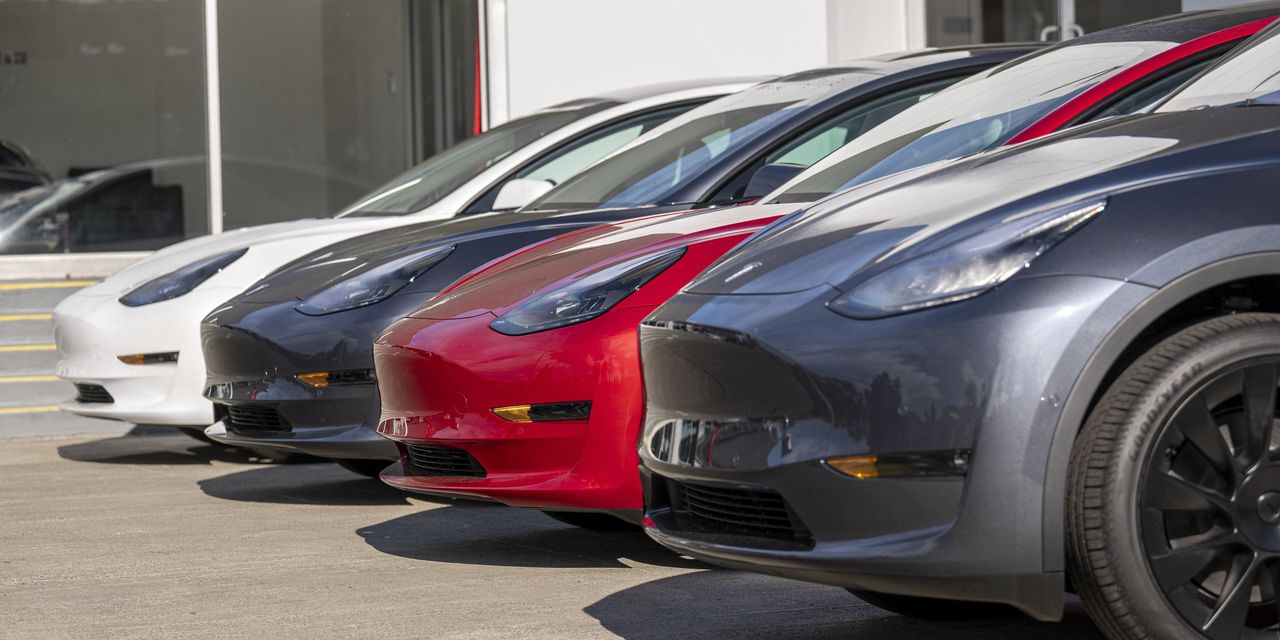
Streetwise started the year with a prescient forecast: There is plenty of scope to be horribly wrong about predictions of speculative excess. As 2021 draws to a close, it is a good time for investors to look back at the decisions they made over the year, and why they made them, with the hope of learning from their mistakes. My mistakes are preserved for posterity in public columns, but investors should keep a diary of why they entered each trade, to avoid the human tendency to rationalize with hindsight.
Both my biggest mistake and one of my biggest successes was Tesla. Start with the mistake: In mid-January I argued that Tesla and other electric-car stocks were in a “wild bubble.” Tesla stock was at $845, up almost 20% in the first two weeks of the year and an eye-watering 685% in the previous 12 months. While it did fall hard for several months, it is now back above $1,000, helped both by an extraordinary rally in October and by another 20% gain in the days around Christmas. “Horribly wrong” just about captures it.
My Tesla success was in November, recommending that investors follow Chief Executive Elon Musk’s example and sell after the irrational October run-up. The company may be great, but expectations were too high. The shares plummeted in the following weeks, although they made back much of the loss in the pre-Christmas bounce.
Tesla has been both a bellwether indicator for and an unusual winner from the market in wildly speculative bubble stocks all year. Back in January its peak marked the beginning of the end for the SPAC, clean energy, cannabis and loony-long-shot-idea bubbles that inflated late in 2020.
All had a bit of a revival during Tesla’s rollicking October. But strip away Tesla, and the thematic funds that followed the bubbles recorded losses of around 20% this year. Many individual names lost far more, with hot battery stock QuantumScape down 71%, General Motors -backed electric-car maker Lordstown Motors down 79% and popular Chinese rival NIO down 37%.
Something similar was true for the meme stocks led by GameStop and AMC Entertainment. I pondered the case for issuing new overvalued stock in June, concluding that AMC CEO—or “silverback,” as the self-styled apes who bought the shares call him— Adam Aron was right to issue as much stock as he could get away with. I also thought investors would be dumb to buy it, which has proven right as the shares are now half what they were then.
My correct call on the speculative bubble was marred by my failure to appreciate that Tesla, the bubble’s biggest winner, would be almost immune to its bursting. It could be that Tesla stock is just an outlier that will fall back eventually (still my core case). The alternative is that Tesla is doing in one year what it took Amazon 20 years to do after its 1999-2000 dot-com peak: prove that it is such an outstanding company that its bubble valuation was justified after all.
Despite the visible froth in fashionable parts of the market, I stuck with stocks all year on the principle that the economy was recovering and the main alternative, bonds, was so unappealing. But while the stock market turned out to be a great place to be, I was entirely wrong about bonds from the end of March onward, as they repeatedly refused to follow the macroeconomic playbook. Because of the strong link between long-dated bond yields and the relative performance of growth stocks, this also meant I was wrong-footed in my expectation that cheap “value” stocks would do better.
Instead of bond yields rising as inflation took off, the 10-year Treasury yield peaked at the end of March and the 30-year is higher now than it was for most of the year.
Inflation was the economic story to watch. Again, I was right and wrong. My headline in May was “Everything Screams Inflation,” and it is tempting just to take the credit for being right and early. In fact, along with many economists I expected pandemic-induced inflation to come back down by itself, and the Fed to act if necessary; my headline was about the longer term. Inflation hasn’t come back down by itself, and as the year wore on the underlying price trends became more and more worrying, culminating in my reversing course and concluding the Fed was just making excuses to delay action.
SHARE YOUR THOUGHTS
What did you learn about investing in 2021? Weigh in below.
What have I learned from the year? It is possible to be exactly right at a high level—as with my bubble-spotting—but to lose money on the implementation, as anyone who shorted Tesla as a result would have done. It is important to be quick to change views as the facts change, shown by the developing patterns in inflation. And it is important to pay attention to details, which is where it first became clear that inflation was broadening out beyond pandemic-affected spending shifts.
As important as the lessons we learn are the ones we refuse to learn. Tempting as it is, I don’t think the lesson of 2021 is Just Buy Stocks, as that loses the nuance. Unfortunately, Just Buy Stocks When Bond Yields Are Low, the Economy Is Booming and the Fed Is Behind the Curve is a hopeless headline. It is also of little use for 2022 as the economy slows back to normal and the Fed moves toward rate rises. Too much has changed.
Write to James Mackintosh at [email protected]
Copyright ©2021 Dow Jones & Company, Inc. All Rights Reserved. 87990cbe856818d5eddac44c7b1cdeb8








